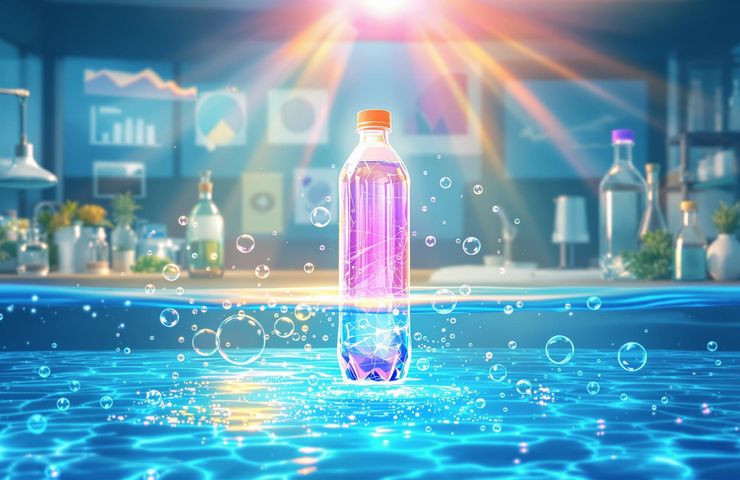
Plastic Photoreforming: Solar-Driven Pathway to Clean Hydrogen and Chemical Feedstocks
August 13, 2025Ever heard of plastic photoreforming? It’s been making waves in the clean energy scene, and honestly, the timing couldn’t be better. On July 10, 2025, Jiangsu University teamed up with Shanghai Jiao Tong University to drop a mini-review in Frontiers in Energy. They unpack a solar-driven wizardry that turns plastic waste into pure hydrogen production and valuable chemical feedstocks. The magic ingredients? Cutting-edge photocatalyst design, savvy reaction thermodynamics and kinetics analysis, and just the right pinch of AI-assisted catalyst design. Meanwhile, hands-on experiments—think the hydrogel-stabilized photocatalyst from South Korea’s Institute for Basic Science—are already proving the concept under the sun.
This isn’t science fiction. For ages, throwing plastic into landfills or burning it off seemed unavoidable, whether you’re burying carbon or pumping out pollutants. And most of today’s hydrogen comes from steam-reforming methane, with a massive CO₂ hangover. Plastic photoreforming kicks those old-school methods to the curb by upcycling waste, locking carbon into co-products like monomers, and churning out clean hydrogen with nothing more than sunlight and water. Circular? Check. Sustainable? Double check. Future-proof? Absolutely.
What Is Plastic Photoreforming?
At its heart, plastic photoreforming is a photocatalytic conversion process with a solar twist. Sunlight hits semiconductor materials, creating electron–hole pairs. The holes go straight to work oxidizing plastic fragments (imagine PET chains), snipping them into smaller organics. Meanwhile, those excited electrons head for water protons and reduce them into hydrogen gas—hello, clean energy! Tweaks like doping, heterojunctions, and metal co-catalysts fine-tune band gaps, boost charge separation, and speed up surface reactions. And don’t turn a blind eye to reactor setup; how you disperse the catalyst, let light through, and manage mass transfer can make or break your efficiency. It’s all about striking the sweet spot between thermodynamics and kinetics for smooth, sustained photoreforming.
A Brief History of Photocatalysis
The photocatalysis story starts way back in the 1970s, when Fujishima and Honda first split water on titanium dioxide under UV light. Since then, scientists have chased materials like cadmium sulfide, complex oxides, and carbon-based semiconductors, all dreaming of visible-light action and rock-solid stability. Progress wasn’t always swift—charge carriers tend to recombine too fast, and catalysts degrade. But the 2000s brought nanostructures and heterostructures that reignited excitement. Fast-forward to today, and innovations like floating photocatalysts and AI-assisted catalyst design are pushing photocatalysis—and plastic photoreforming—into real-world territory.
Recent Advances
The mini-review highlights two big trends. First up: advanced photocatalyst architectures. We’re talking core–shell designs, Z-schemes, and cleverly doped metal oxides that crank up conversion rates and guide product selectivity. Next: the rise of AI-assisted catalyst design. By feeding experimental and computational results into machine-learning models, researchers can quickly screen materials, predict performance from band alignments and surface energies, and sketch out new photocatalyst recipes in record time. This data-driven approach slashes the gap between idea and lab demo.
Experimental Breakthrough: Hydrogel-Stabilized Floating Photocatalyst
On June 11, 2025, the Institute for Basic Science at Seoul National University revealed a neat floating system that embodies this concept. Photocatalyst particles sit snugly inside a buoyant polymer hydrogel right at the air–water interface. The perks? Strong catalyst stability (no leaching or light damage), better gas separation for efficient hydrogen production, and full-on sun exposure without any stirring required. When tested with PET plastic, it chopped the polymer chains into ethylene glycol and terephthalic acid, all while co-producing hydrogen under natural sunlight.
Why It Matters
Here’s the cold, hard truth: we churn out over 380 million tons of plastic every year, and a huge chunk ends up in landfills or the ocean. Meanwhile, global hydrogen needs are set to triple by 2050, but most of it still comes from fossil fuels. Plastic photoreforming tackles both headaches in one shot—turning waste into a resource, slashing pollution, and fueling a cleaner hydrogen economy. Plus, the chemical byproducts can feed right back into manufacturing, nudging us closer to a true circular economy.
Economic and Policy Implications
Scaling up plastic photoreforming needs the right frameworks. Think incentives for chemical recycling, robust waste-sorting standards, and smooth integration into hydrogen production markets. On the money side, it boils down to green hydrogen prices, the cost (or even negative price) of plastic feedstocks thanks to tipping fees, and revenue from selling monomers. Early techno-economic studies look promising if catalysts hold up and reactors hit high solar-to-hydrogen efficiencies. Governments could give this tech a serious leg up by investing in pilot projects and fast-tracking approvals for co-product streams.
Challenges and the Road Ahead
Of course, lab-scale gold doesn’t always translate seamlessly to the real world. Everyday plastics are messy mixes of polymers, additives, and contaminants that can foul catalysts. Durability is another hurdle—catalysts must stay active for thousands of hours under variable sunlight and temperature swings. Reactor designs need to nail photon capture, heat management, and product separation. And we can’t skip life-cycle assessments to prove the environmental upsides over conventional methods. Some researchers are even exploring hybrid systems, merging photoreforming with electrochemical or thermal steps to max out yields.
Bottom Line
When you blend a comprehensive mini-review with an elegant hydrogel-stabilized photocatalyst experiment, a clear path emerges for turning plastic trash into clean hydrogen and valuable raw materials. By standing on decades of photocatalysis expertise, supercharging it with AI-assisted catalyst design, and applying savvy interface engineering, plastic photoreforming is poised to be a game-changer in waste management and sustainable energy. Sure, there’s plenty of work ahead to scale up, but the foundation is rock-solid—and that’s a bright sign for our circular, low-carbon future.
Source: springer



 With over 15 years of reporting hydrogen news, we are your premier source for the latest updates and insights in hydrogen and renewable energy.
With over 15 years of reporting hydrogen news, we are your premier source for the latest updates and insights in hydrogen and renewable energy.